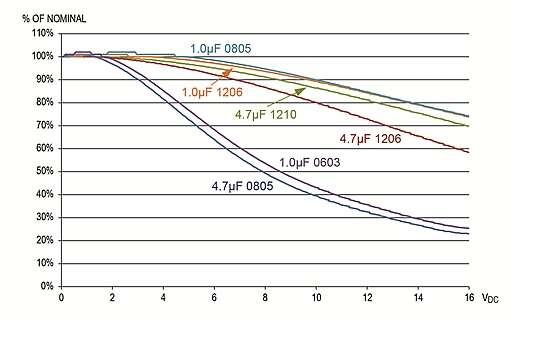The short answer, for your circuit, it won't matter.
When it comes to ceramics, there is a dirty little secret. When you apply a DC voltage to them, their capacitance values go down. Sometimes very significantly, like 50-60% down. Some people have done empirical testing and found that for the same voltage and capacitance and dielectric type, then the larger packages do not suffer as much loss as do the smaller packages.
Murata also has a good write up on it. To learn more google: "ceramic capacitors dc bias"
EDIT
You won't find it in most datasheets. You have to go to the manufacturer's web site. For Kemet, here is an example Choose your cap through their search tool, then choose the KSIM button. Then select the DC bias plot.


